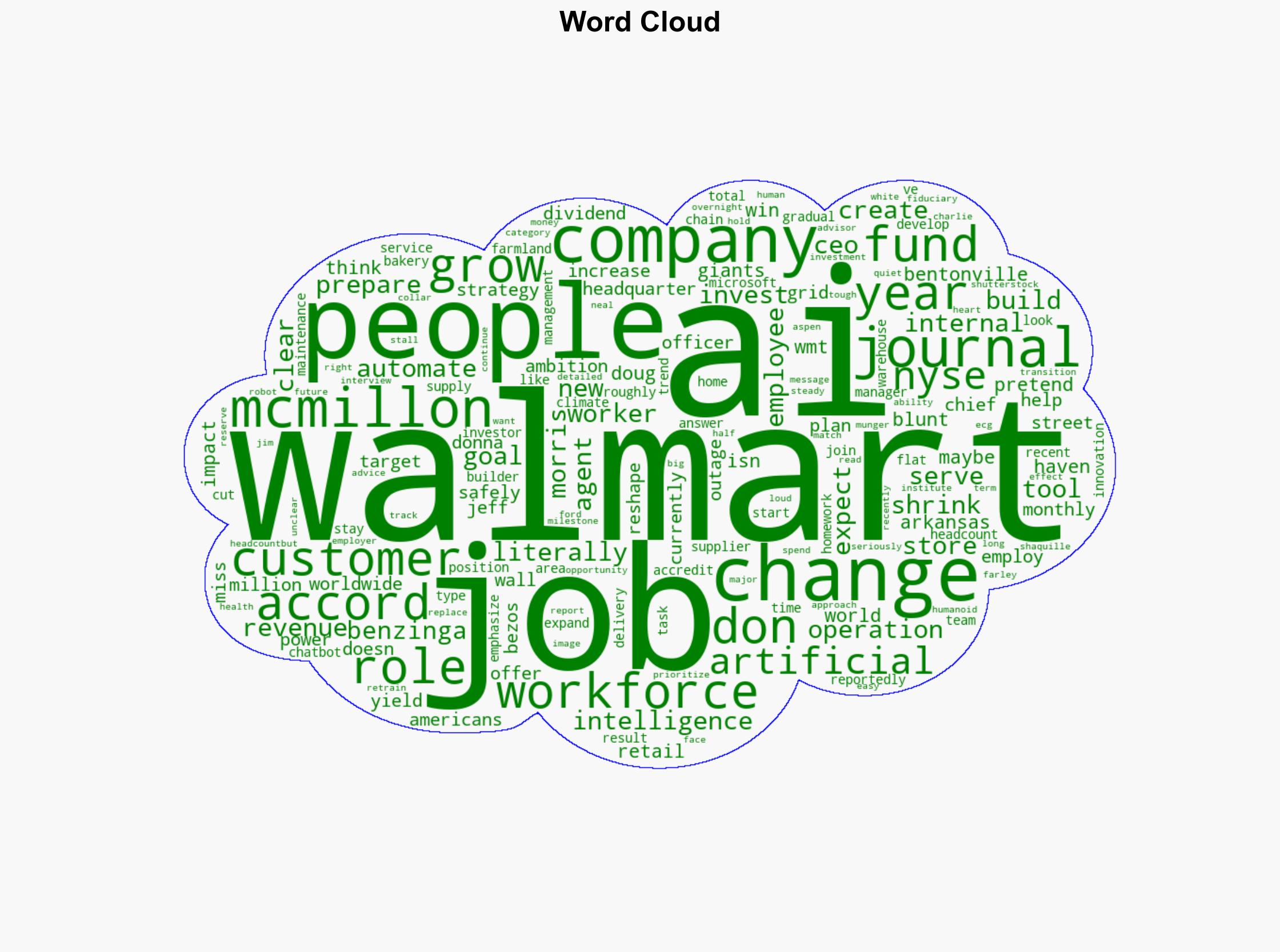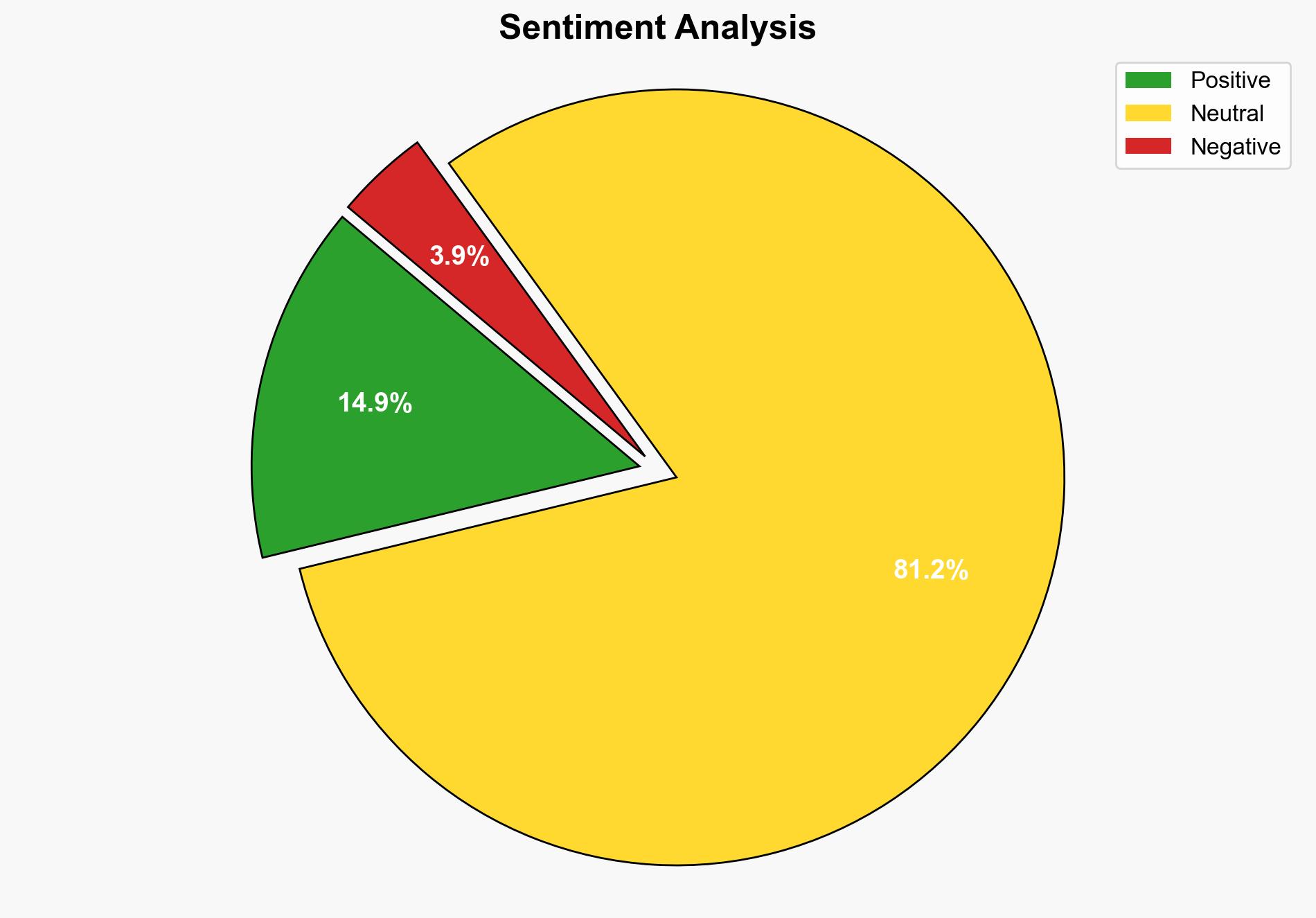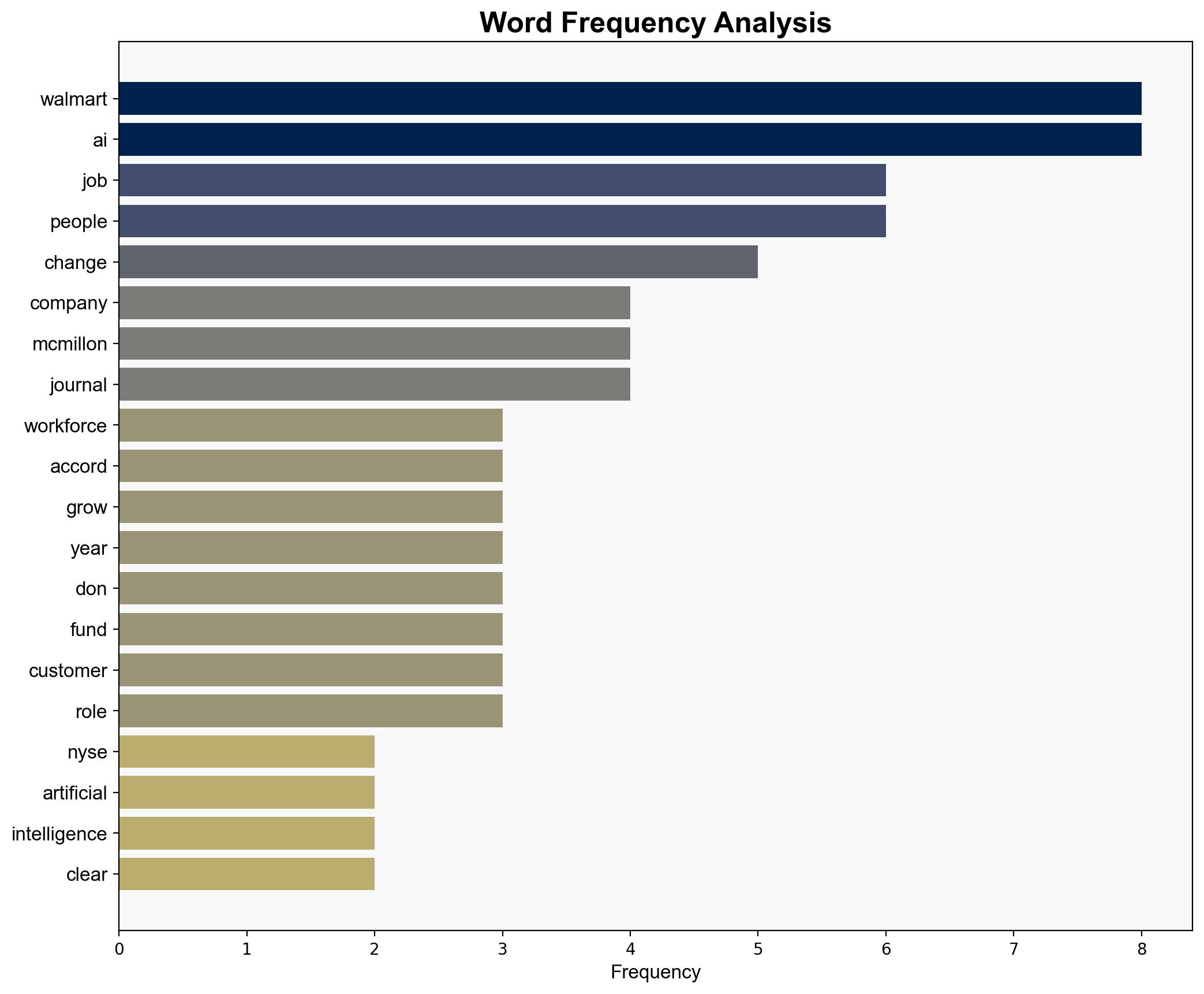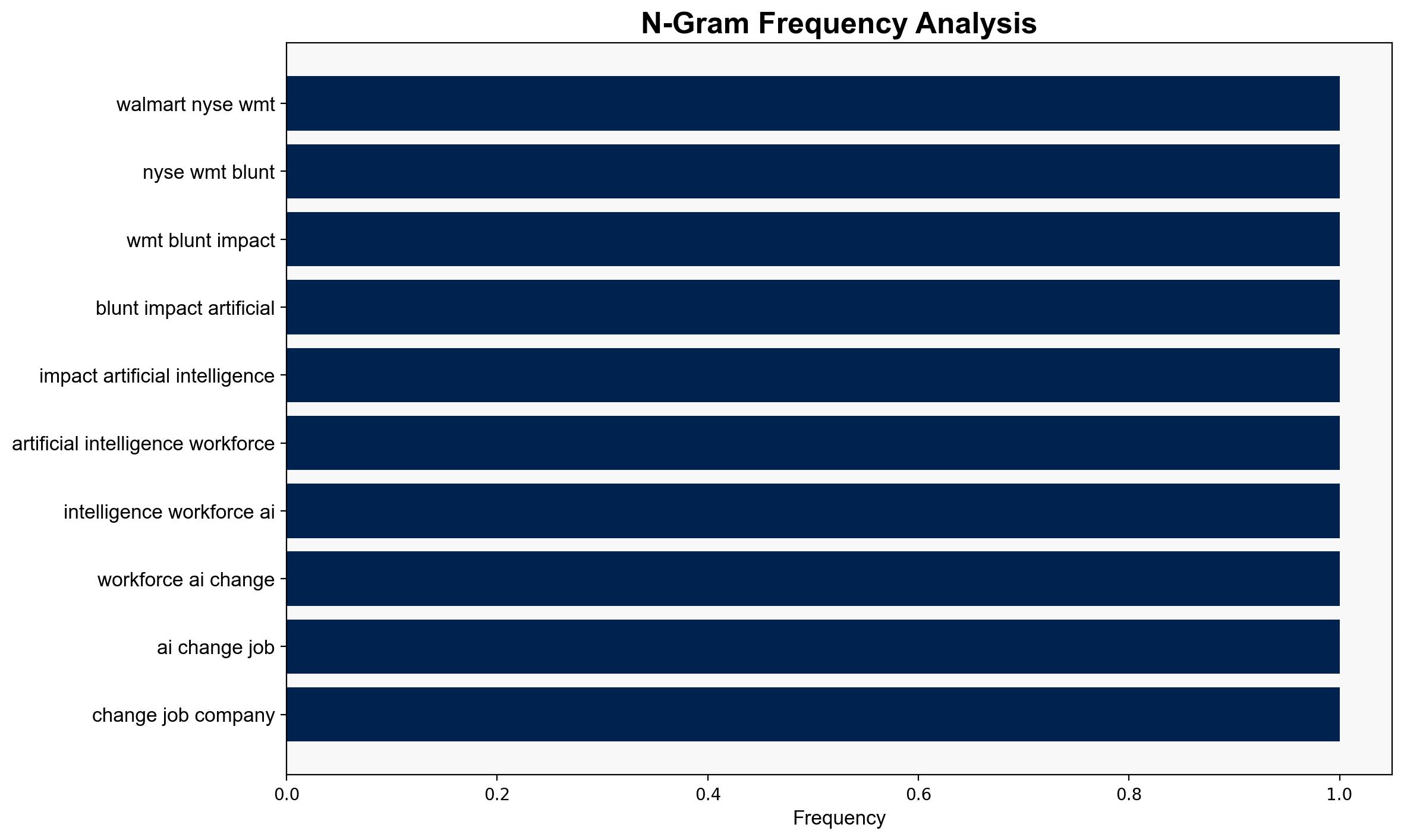Walmart Plans To Grow Revenue Without Hiring More People Pointing To AI As The Future Of Its Workforce – Benzinga
Published on: 2025-09-30
Intelligence Report: Walmart Plans To Grow Revenue Without Hiring More People Pointing To AI As The Future Of Its Workforce – Benzinga
1. BLUF (Bottom Line Up Front)
Walmart’s strategic shift towards AI-driven operations aims to enhance revenue without increasing workforce size, suggesting a significant transformation in retail employment dynamics. The most supported hypothesis is that Walmart will successfully integrate AI to optimize operations, leading to a stable workforce size but altered job roles. Confidence level: Moderate. Recommended action: Monitor Walmart’s AI integration and workforce adaptation strategies to assess broader retail sector impacts.
2. Competing Hypotheses
1. Walmart will effectively use AI to increase revenue while maintaining a stable workforce size, primarily by automating routine tasks and reallocating human resources to customer-facing roles.
2. Walmart’s AI integration will face significant challenges, resulting in an eventual need to either increase workforce size or face operational inefficiencies, potentially impacting revenue growth.
Using ACH 2.0, the first hypothesis is better supported by Walmart’s current AI initiatives in customer service and supply chain management, as well as leadership statements emphasizing gradual change and workforce retraining.
3. Key Assumptions and Red Flags
Assumptions:
– AI tools will be effective and scalable across Walmart’s operations.
– Workforce retraining will be sufficient to transition employees to new roles.
Red Flags:
– Lack of detailed data on the effectiveness of AI tools and retraining programs.
– Potential overreliance on AI without contingency plans for integration failures.
Blind Spots:
– Unclear long-term impact of AI on job satisfaction and employee retention.
4. Implications and Strategic Risks
The integration of AI in Walmart’s operations could set a precedent for the retail industry, influencing employment patterns and operational strategies. Risks include potential backlash from workforce reductions or role changes, cybersecurity threats from increased digital operations, and economic impacts from shifts in employment structures. Geopolitical tensions may arise if AI adoption affects global supply chains.
5. Recommendations and Outlook
- Monitor Walmart’s AI deployment and workforce adaptation closely to identify best practices and potential pitfalls.
- Develop contingency plans for potential AI integration failures.
- Scenario Projections:
- Best: Successful AI integration leads to increased efficiency and stable workforce, setting a positive industry standard.
- Worst: AI integration fails, leading to operational disruptions and negative impacts on revenue and workforce morale.
- Most Likely: Gradual AI integration with mixed results, requiring ongoing adjustments and retraining efforts.
6. Key Individuals and Entities
– Doug McMillon
– Donna Morris
– Walmart
7. Thematic Tags
economic transformation, workforce automation, AI integration, retail industry dynamics





